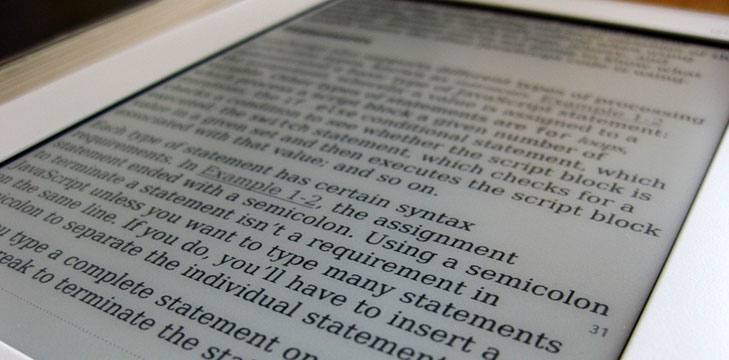Sometimes, the promise is greater than the reality, the reality is more complicated than what was envisioned, and what was envisioned is more difficult than what was thought. This seems to encapsulate the legislative goal, but also the stark reality, of the Instructional Materials Allotment (IMA). Let’s take a look back to see how we got here so that what was envisioned by the 82nd Texas Legislature can become a reality.
In 2011, the state was facing an unprecedented budget crisis. In order to balance the budget, the legislature made severe cuts, including $5.4 billion from the education budget. In this environment, the concept of merging state funds that had been devoted to purchasing technology and instructional materials was advocated in Senate Bill 6.
This bill had much to offer districts. Prior to 2011, school districts could only select textbooks that were on the State Board of Education approved list. The state completely funded these books at no cost to the districts. The books may have been free, but the state-purchased textbooks did not meet all of the district’s instructional material needs and thus were often used only as a resource. This meant that, for many districts, they stored a vast number of textbooks in their warehouses or distributed them to students who then took them home and stored them in their closet. This is what happened in my house!
Teachers Less Dependent on One Resource
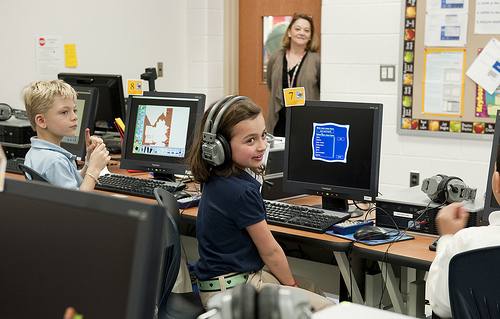 You might be thinking, why weren’t the teachers using the textbooks? Aren’t they aligned to the state objectives? Why wouldn’t a teacher want to use a “free” resource that is aligned to the objectives? Those are great questions, and there are probably multiple answers. But my theory is that districts slowly began to move away from a heavy dependence on textbooks as the state accountability system began to gain prominence. In order to ensure their students would do well on the state tests, districts began to build their teaching curriculum around the testing standards, especially in the areas in which their students struggled. This led many districts to begin using textbooks as a resource and not the resource. The districts began to purchase additional resources to supplement the textbooks to match their teaching curriculum. This resulted in waste as many textbooks went unused while districts spent their local money to purchase materials to supplement the state-approved textbooks.
You might be thinking, why weren’t the teachers using the textbooks? Aren’t they aligned to the state objectives? Why wouldn’t a teacher want to use a “free” resource that is aligned to the objectives? Those are great questions, and there are probably multiple answers. But my theory is that districts slowly began to move away from a heavy dependence on textbooks as the state accountability system began to gain prominence. In order to ensure their students would do well on the state tests, districts began to build their teaching curriculum around the testing standards, especially in the areas in which their students struggled. This led many districts to begin using textbooks as a resource and not the resource. The districts began to purchase additional resources to supplement the textbooks to match their teaching curriculum. This resulted in waste as many textbooks went unused while districts spent their local money to purchase materials to supplement the state-approved textbooks.
Districts Given More Flexibility
One of the great achievements of SB 6 is that it placed the purchasing decision for instructional materials where it belonged — with the school district. The state now provides districts with a budget via the Instructional Materials Allotment to purchase whatever instructional materials they believe best meet their student’s instructional needs. This provides districts with complete flexibility on which materials they choose and in what format — print or digital. The district can choose materials from the SBOE-approved list or from a wide variety of sources. The hope is that, if the purchasing decision is made at the local level, it will ensure a more fiscally sound purchase and have fewer materials sitting on the floor of a student’s closet.
Along with the flexibility of instructional materials selection, SB 6 eliminated the Technology Allotment which had been used by districts since 1992 to fund technology purchases at around $30 a student. SB 6 eliminated the Technology Allotment, but enabled districts to use the IMA to purchase technology intended for instructional purposes. The only caveat is that the district must first certify they have instructional materials that cover all the TEKS for each grade level before they decide to purchase technology with IMA funds. Although the IMA was envisioned by the legislators as a dual-purpose fund, in reality, it never fully met their expectations. Before 2011, the state had allocated around $270 million for the Technology Allotment for each biennium. Below is how districts have actually used the fund to purchase technology and instructional materials.
Instructional Materials Allotment Expenditures since 2011
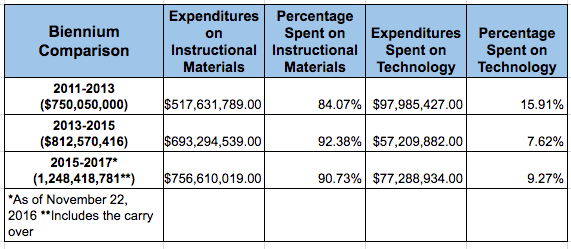
The IMA expenditures for technology have fallen dramatically since 2011. In fact, since the passage of SB 6, districts have only used $232,484,243 for technology purchases, whereas the districts would have had $810,000,000 if the Technology Allotment had not been eliminated.
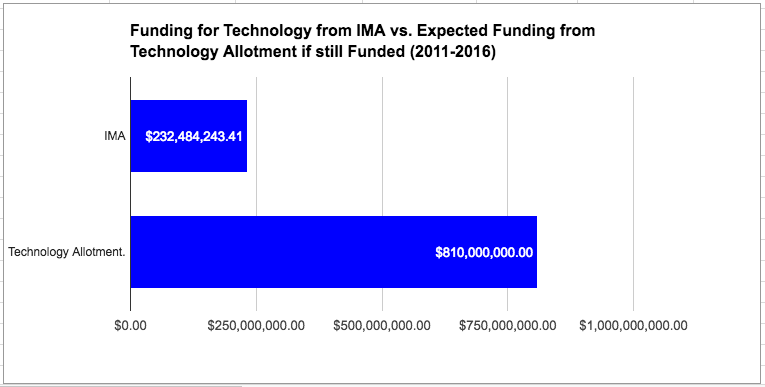
Too Much Uncertainty
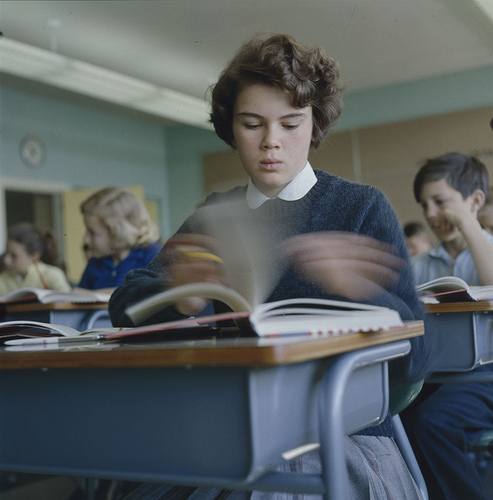 School districts now live with the uncertainty of not knowing the cost of the next proclamation nor how much funding will be in the IMA. Prior to SB 6, the SBOE would establish a maximum price for any textbook that would be placed on their approved list. As expected, every textbook submitted for SBOE review came under that maximum price. Because the state was doing the purchasing, publishers could afford to offer the books at these prices because they knew they had a chance of selling a large number of books. SB 6 eliminated the maximum price because it was assumed that, with the new flexibility afforded in SB 6, business would decrease for the major publishers, which might mean that they would need to adjust their prices to remain profitable. The result is that the price of textbooks has increased and so has the uncertainty. Districts have no way of knowing how much the next proclamation is going to cost, so they often save whatever they don’t spend on the current proclamation to make sure they have enough for the next one.
School districts now live with the uncertainty of not knowing the cost of the next proclamation nor how much funding will be in the IMA. Prior to SB 6, the SBOE would establish a maximum price for any textbook that would be placed on their approved list. As expected, every textbook submitted for SBOE review came under that maximum price. Because the state was doing the purchasing, publishers could afford to offer the books at these prices because they knew they had a chance of selling a large number of books. SB 6 eliminated the maximum price because it was assumed that, with the new flexibility afforded in SB 6, business would decrease for the major publishers, which might mean that they would need to adjust their prices to remain profitable. The result is that the price of textbooks has increased and so has the uncertainty. Districts have no way of knowing how much the next proclamation is going to cost, so they often save whatever they don’t spend on the current proclamation to make sure they have enough for the next one.
The IMA is funded from the Permanent School Fund. Every two years, the SBOE determines what percentage of the PSF can be given to the legislature to pay for the IMA and other education expenses. Per SB 6, 50% of the amount they send to the legislature goes into the IMA. Although this amount has gone up since 2011, districts cannot be certain that this will always be so.
This uncertainty became apparent from the responses we received in a survey conducted in April of this past year. In the open-ended responses, districts indicated that this uncertainty is a major factor in their decision to spend very little of their IMA on technology. When asked why their district wasn’t spending at least $30 a student (IMA) on technology, 44% said it was because they were saving for Proclamation 2017.
IMA Not Widely Seen as a Technology Funding Source
It is also becoming clear that, in many districts, they no longer see the IMA as a funding source for technology. 23% of the respondents say they never use the IMA for technology, and 47% indicated they rarely use it for tech purchases. This may be due to the fact that only 46% of the districts who responded to the survey always include technology staff in the decision-making process, and 23% of the districts never include these staff members.
 Since TCEA’s mission is to help districts implement a digital learning environment, the reduction in funding for technology is a grave concern. We have supported the structure of the IMA because we believe that technology should always be purchased within an instructional context. Because technology should support the instructional goals of a district, it is healthy for district personnel that support both to work together to determine how best to use district resources to meet the district’s strategic goals. This includes the IMA.
Since TCEA’s mission is to help districts implement a digital learning environment, the reduction in funding for technology is a grave concern. We have supported the structure of the IMA because we believe that technology should always be purchased within an instructional context. Because technology should support the instructional goals of a district, it is healthy for district personnel that support both to work together to determine how best to use district resources to meet the district’s strategic goals. This includes the IMA.
That being said, we think Texas can do better. Digital learning is not new anymore. It is the way most adults do personal and professional business and how they obtain new learning as well. It is time for schools to utilize the same technologies within the learning environment that students are using outside of school. TCEA has done a lot of brainstorming and research about how we can move digital learning forward, and we feel like this is the time to act. The interest in digital learning from all branches of state government is at an all-time high. Next week, I’ll post a follow-up that will outline some policy changes that we think will have a positive impact on not only the use of the IMA, but also in breaking down the barriers of a digital education.

